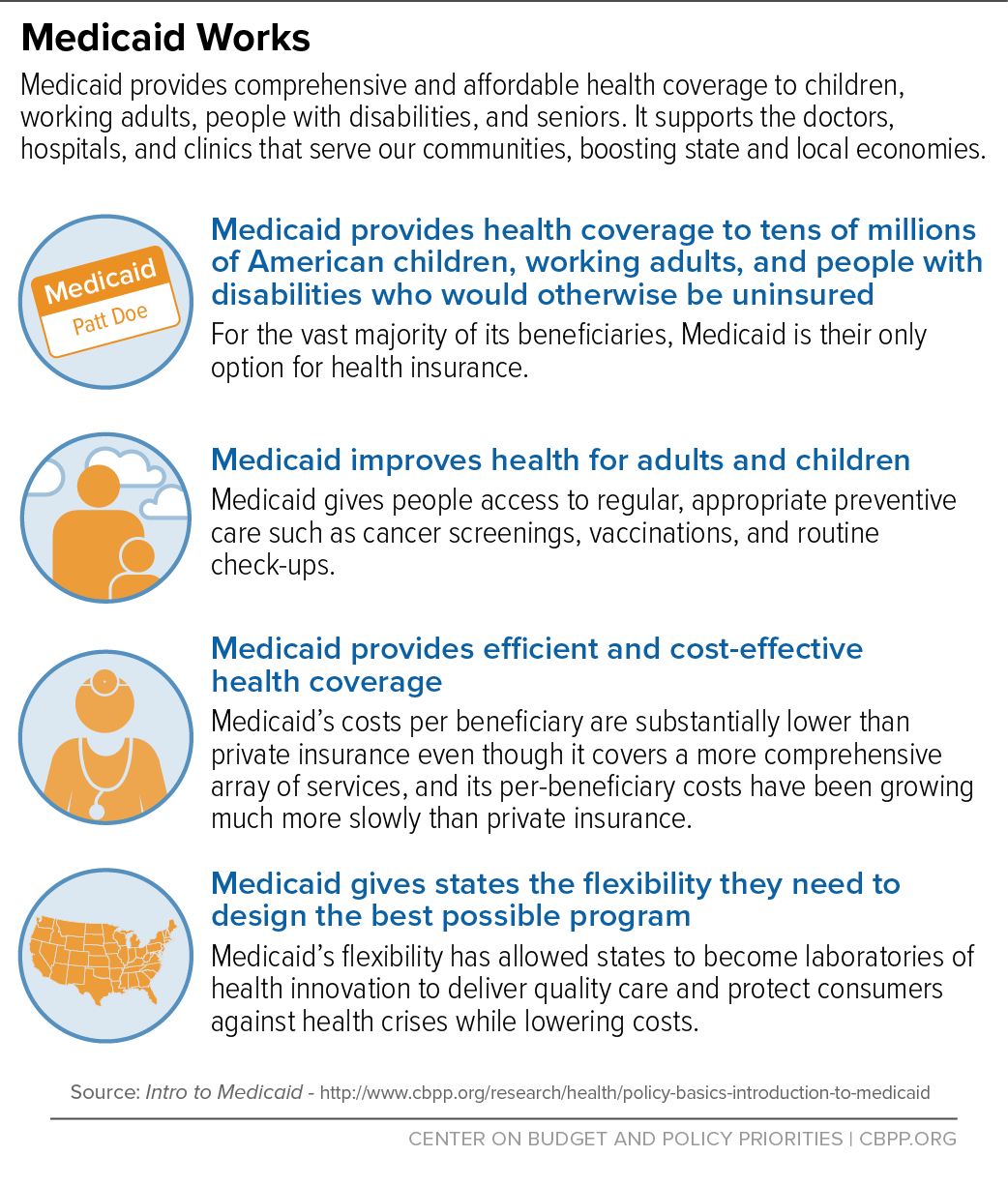BEYOND THE NUMBERS
This is the next in our “Medicaid Works” blog series, which aims to inform the debate over Medicaid’s future by providing the latest facts and figures on this essential and popular part of the nation’s health care system.
Since health reform’s major coverage expansions took effect in 2014, Medicaid has helped reduce the number of uninsured from 45 million to 29 million, the latest figures show. And Medicaid helps people improve their health: people covered by Medicaid are likelier to use preventive care, to have a regular office or clinic where they can receive primary care, and to receive diagnosis of and treatment for depression and diabetes than the uninsured.
Overall, Medicaid provides comprehensive and cost-effective health coverage to millions of seniors, people with disabilities, parents, children, and working adults. It’s the largest source of health insurance for children and covers two-thirds of the country’s nursing home residents.
It’s vital to state economies as well; it helps keep hospitals and clinics open and is a critical source of revenue for doctors. As a flexible source of health coverage, Medicaid allows states to meet their communities’ health needs in new and innovative ways.
The infographic below sums it up: Medicaid works for states, communities, and families. You can right click on the infographic to download it for use on social media.

